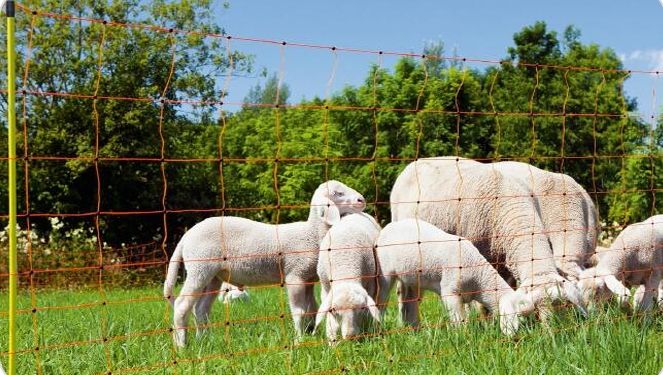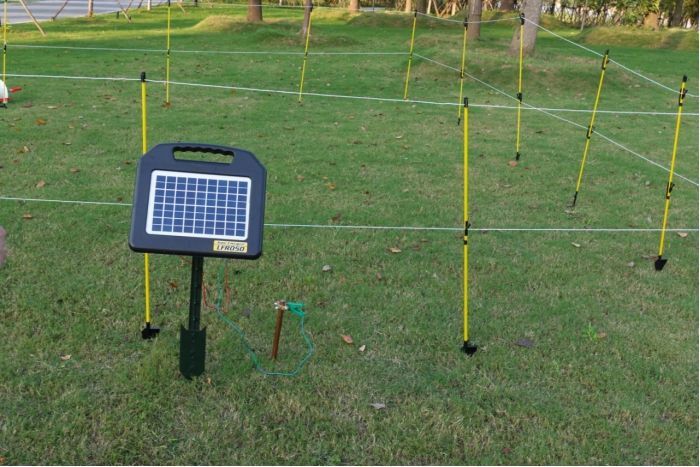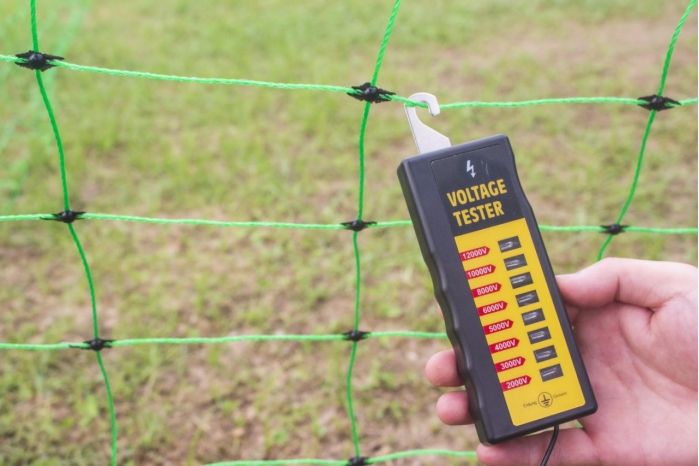
Building an Electric Fence: What You Need to Know
When installed correctly and maintained, an electric fence is a reliable and efficient solution for many situations. At Lydite, we’ve gathered key advice to help guide you through the process of building and maintaining your electric fence. Consider this your "Electric Fencing 101" guide.
Why Build an Electric Fence?
At Lydite, we recommend electric fencing for three main reasons:
Economical – Electric fences are often more affordable compared to traditional fencing methods.
Versatile – They can control a wide variety of livestock.
Ease of Installation – Electric fences are easier to install than many other types of fences.
How Does an Electric Fence Work?

An electric fence works as a mental barrier, not a physical one like barbed wire. It delivers a mild shock to animals, training them to stay away from the fence. The electricity used in an electric fence is safe for animals, using a high-voltage, low-amperage system.
“Many people worry about harming their animals, but electric fences are designed with safety in mind,” says the Lydite team. “The system uses a low impedance, sending pulsing shocks that allow the animal to safely retreat without harm.”
 Powering Your Electric Fence
Powering Your Electric Fence
An electric fence is powered by an energizer, and there are two main types: AC (alternating current) and DC (direct current).
AC Energizers: These are plug-in units and tend to be the most economical option for the power they provide.
DC Energizers: These units run off a battery and can be paired with a solar panel to keep the battery charged.
When purchasing an energizer, it’s important to consider its joule output. For every joule of output, you can cover 20 to 40 acres of fence. If you're planning to cover a larger area, make sure to select an energizer with an appropriate output.
Also, be aware of your soil type. If you're in a rocky or sandy area, more joules will be required than if you're on clay soil with higher moisture content.

Deciding on the Voltage You Need
Choosing the correct voltage depends on the type of animal you're trying to fence in or out. Different animals have different voltage requirements due to their size, coat type, and behavior. Here's a general breakdown of voltage needs:
Beef Cattle (3,500 V): Bulls require higher voltage due to their more aggressive behavior.
Dairy Cattle (3,000 V): Calves and heifers need lower wires and less spacing.
Horses (2,500 V): A fence made of politape, wire, or rope works well, and horses learn quickly.
Llamas (6,000 V): Thick coats insulate them, requiring higher voltage.
Sheep (6,000 V): Wool acts as an insulator, necessitating higher voltage.
Goats (6,000 V): Some goats have thick insulating coats, requiring high voltage.
Pigs (3,000 V): Place wires close to the ground to deter pigs.
Pets (750 V): Start wires near the ground for small animals.
Fencing Wildlife
When building an electric fence to keep wildlife out, be aware that certain animals require higher voltages due to their size and behavior:
Wild Hogs (6,000 V): Aggressive and persistent; wires should be placed close to the ground.
Wolves and Coyotes (6,000 V): Thick, insulating fur requires higher voltage.
Bears (6,000 V): Thick fur also requires higher voltage.
Deer and Elk (6,000 V): These animals can run through fences, so make sure your fence is highly visible.
Small Nuisance Animals (2,000 V): Use lower wires for these smaller creatures that may dig.
Building an Electric Fence
The ease of building an electric fence is one of its key advantages. You will need minimal installation tools and basic materials. To build your electric fence, gather the following materials:
An energizer
Ground rods
Insulators
Posts
High-tensile smooth or electric wire
Lydite offers high-quality electric wire options, including smooth wire and various gauges of electric fence wire.
For proper installation help and step-by-step directions, visit Lydite’s website.
How Often Should You Check Your Electric Fence?
Once your electric fence is installed, it’s important to check it regularly, ideally on a daily basis.
“Check for any issues such as wildlife running through the fence or broken insulators,” advises the Lydite team. “There are tools available that can help, such as fence alert systems or indicator lights. These will notify you when the voltage drops below a certain level, allowing you to make necessary adjustments.”
Before performing any repairs, remember to turn off the energizer to ensure safety.
For any questions or additional support, don't hesitate to reach out to us through our website Lydite Fence.









Wuxi, China
Zhihui568, Jianghai Western Road
Wuxi, Jiangsu, China
Head Factory
Area A, Shuangmiao Industrial Park, Wutong Road, Huishan District, Wuxi City, Jiangsu Province, China

